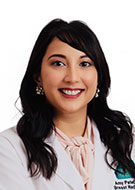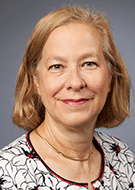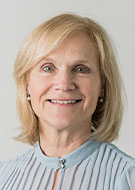Access, Cost and Awareness Among the Barriers to Screening Mammography
Patients continue to be affected by perpetual barriers to mammography




Despite the increased use of screening mammography over the past 30 years, it remains underutilized. It is estimated that only half of eligible women in the U.S. get the exam despite evidence that screening mammography reduces breast cancer mortality.
“The barriers to screening mammography are complex and multifactorial,” said Eric Kim, MD, clinical assistant professor, Department of Radiology, NYU Grossman School of Medicine. “Screening can only be effective if the eligible population is able to get screened.”
Among the many obstacles that deter women from obtaining the screening exam are access issues, direct and indirect costs, conflicting guidelines and a lack of awareness.
Access and Uptake Depends on Where Patients Live
In his 2019 Radiology study analyzing the 500 largest cities in the U.S., Dr. Kim reported that the highest use of screening mammography occurred in coastal cities and the lowest use occurred in the mountain states. Studies have also shown that women in rural areas have lower screening rates compared with women in urban areas.
“Our study demonstrated disparities in screening mammography use at the city level, irrespective of city size, throughout the United States,” Dr. Kim said. “Utilization was positively correlated with median household income and having private insurance and negatively correlated with a lack of health insurance and poverty.”
Disparities also exist in access to and use of digital breast tomosynthesis (DBT) across the country. DBT has been shown to increase cancer detection rates and lower recall rates compared to digital (2D) mammography. Although 45% of the country’s accredited mammography units are DBT capable, they are more likely to be found in more affluent areas of the country.
A 2021 Radiology: Imaging Cancer review of more than two million screening exams in 92 geo-diverse centers found that overall rates of DBT use were lower among women who were black, Hispanic, or Asian; had lower educational attainment and lived in zip codes with lower median incomes.
Consider this case in point: When Amy K. Patel, MD, joined Missouri’s Liberty Hospital as a radiologist with Alliance Radiology, P.A., in 2018, only two of the practice’s eight partnering facilities offered DBT. By August of 2021, all sites were providing DBT.
“We worked hard to make sure all women had the same access to this technology,” said Dr. Patel, who serves as medical director of The Breast Care Center at Liberty Hospital, which serves urban, suburban and rural populations. “We tailored a strategic plan for each of the individual facilities to raise funds through grant writing and working with city councils, hospital leadership and medical imaging vendors.”
Access to screening mammography remains an issue for some of the rural residents living in the practice’s expansive service area. Dr. Patel said women in 19 counties of Northwest Missouri have to travel more than 45 minutes one way to reach an accredited breast imaging center.
“There are still counties we’re not yet reaching, so it’s important we look at all avenues to serve these patients, from boots-on-the-ground advocacy to mobile mammography, she said. “It’s so imperative to address these access issues.”
Access and Uptake Depends on Where Patients Live
In his 2019 Radiology study analyzing the 500 largest cities in the U.S., Dr. Kim reported that the highest use of screening mammography occurred in coastal cities and the lowest use occurred in the mountain states. Studies have also shown that women in rural areas have lower screening rates compared with women in urban areas.
“Our study demonstrated disparities in screening mammography use at the city level, irrespective of city size, throughout the United States,” Dr. Kim said. “Utilization was positively correlated with median household income and having private insurance and negatively correlated with a lack of health insurance and poverty.”
Disparities also exist in access to and use of digital breast tomosynthesis (DBT) across the country. DBT has been shown to increase cancer detection rates and lower recall rates compared to digital (2D) mammography. Although 45% of the country’s accredited mammography units are DBT capable, they are more likely to be found in more affluent areas of the country.
A 2021 Radiology: Imaging Cancer review of more than two million screening exams in 92 geo-diverse centers found that overall rates of DBT use were lower among women who were black, Hispanic, or Asian; had lower educational attainment and lived in zip codes with lower median incomes.
Consider this case in point: When Amy K. Patel, MD, joined Missouri’s Liberty Hospital as a radiologist with Alliance Radiology, P.A., in 2018, only two of the practice’s eight partnering facilities offered DBT. By August of 2021, all sites were providing DBT.
“We worked hard to make sure all women had the same access to this technology,” said Dr. Patel, who serves as medical director of The Breast Care Center at Liberty Hospital, which serves urban, suburban and rural populations. “We tailored a strategic plan for each of the individual facilities to raise funds through grant writing and working with city councils, hospital leadership and medical imaging vendors.”
Access to screening mammography remains an issue for some of the rural residents living in the practice’s expansive service area. Dr. Patel said women in 19 counties of Northwest Missouri have to travel more than 45 minutes one way to reach an accredited breast imaging center.
“There are still counties we’re not yet reaching, so it’s important we look at all avenues to serve these patients, from boots-on-the-ground advocacy to mobile mammography, she said. “It’s so imperative to address these access issues.”
Watch Dr. Kim discuss the multifactorial challenges preventing women from seeking mammography:
Cost Is Always A Factor For Patients
The Affordable Care Act mandates that insurance plans cover the cost of an annual screening mammogram for women 40 and older with no out-of-pocket costs. But for women who are called back for additional imaging following their screening exam—about 10% of the population—there is no mandated coverage.
Priscilla Slanetz, MD, MPH, professor of radiology and interim section chief of breast imaging at Boston University School of Medicine has seen these out-of-pocket costs for follow-up diagnostic imaging deter women from getting a screening mammogram.
In an unpublished study conducted at Boston Medical Center, 21% of women reported that they would not return for the workup from an abnormal screening exam if they knew they would have to pay for the diagnostic imaging and 18% said they would not undergo screening mammography if it involved any kind of out-of-pocket expense.
“For vulnerable populations, cost is always in the back of their mind, even if they are insured,” Dr. Slanetz said. “They don’t understand what’s covered, what service will require a co-pay, what will be applied toward their deductible, or for what portion of the bill they’ll ultimately be responsible.”
To remove this barrier, Dr. Slanetz helped craft a bill that’s been before the Massachusetts state legislature for the last three sessions asking for first-dollar coverage of all breast imaging studies, including the diagnostic imaging generated from an abnormal screening exam.
“We can’t afford to have any women skip screening if we truly want to save lives,” she said.
Screening mammography also carries myriad indirect costs, from missed work to transportation and childcare needs.
“For under-resourced patients, it may be hard to get away during the day for a screening appointment, find a ride to the hospital or money for transportation,” said Rita Freimanis, MD, professor of radiology at University of California, San Francisco. “COVID had an outsized effect on the patients at San Francisco General, because they didn’t want to be close to others on public transportation.”
Conflicting Guidelines Confuse Patients
Breast imaging specialists agree that every woman at average risk for breast cancers should have an annual screening mammogram beginning at the age of 40 years (or earlier, for women at increased risk). However, not all health organizations agree on how often a woman should be screened or at what age she should begin screening. These conflicting guidelines on screening mammography have affected patients’ participation.
Dr. Slanetz said the data supports annual screening.
“Multiple studies have already shown that regular mammography reduces breast cancer mortality by approximately 30%, with more recent studies suggesting that it may be as high as 45%,” she said.
In 2016, the U.S. Preventive Services Task Force (USPSTF) issued a recommendation for biennial screening for women beginning at age 50 years. Though never formally adopted by the federal government, these recommendations have caused confusion among women and health care providers. (The USPSTF is currently reviewing the guidelines published in 2016.)
“There’s a lot of confusion among women as to when they should start screening because of the different recommendations,” Dr. Patel said. “But now many societies are in alignment including RSNA, the National Comprehensive Cancer Network, American College of Radiology, Society of Breast Imaging, American College of Obstetricians and Gynecology and the American Society of Breast Surgeons. We just have to get the others on board.”
Watch Dr. Slanetz discuss the importance of mammogram:
Education and Awareness
Imaging specialists are working to make sure health care organizations, referring providers, legislative bodies and patients understand the importance of having annual mammograms.
“We spend a lot of time working with local health departments creating educational materials, giving talks, doing radio interviews and hosting events,” Dr. Patel said. “We also keep our referring providers up-to-date with the latest recommendations because many patients will do whatever their primary care doctor tells them to do.”
Educating patients who are not fluent in English is another barrier to utilization. Dr. Slanetz said they have worked hard for years to create an environment where all patients feel welcome at Boston Medical Center. Their efforts include a robust iPad-based system that can communicate with patients in more than 250 languages, and communication by mail and electronically in a patient’s preferred language.
Health care providers must also help some patients overcome historical mistrust of medicine and fear of the exam and its results.
“We need to reach people where they are,” Dr. Slanetz stated. “We need to recognize a patient’s barrier to care, whether it be the preferred site for imaging, language or just ensuring that they feel comfortable seeking out care.”
She said more work is needed to identify the specific barriers for patients and to understand how patients’ different cultures and backgrounds may influence their decisions about their care.
“If we want to make a difference, we need to do more research,” Dr. Slanetz said. “Radiologists need to ask themselves, ‘where can I intervene?’”
WEB EXTRAS
Access the Radiology study, “City Patterns of Screening Mammography Uptake and Disparity across the United States."
Access the Radiology: Imaging Cancer review, “Impact of Race, Ethnicity and Socioeconomic Status on Digital Breast Tomosynthesis Access and Use."
Read the Radiology editorial, “Digital Breast Tomosynthesis Screening for Breast Cancer: It Is Cost-effective!”
Read previous RSNA News articles on breast cancer screening: